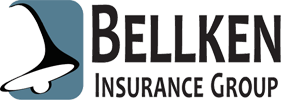Does Your Commercial Property Insurance Cover Hurricane, Flood, and Wind Damage in Florida?
See How We're Different
or call us: 954-233-0733
Florida's picturesque coastlines and vibrant cities attract businesses and investors alike. However, the state's susceptibility to hurricanes, floods, and wind damage poses significant risks to commercial properties. Understanding the nuances of commercial property insurance is crucial for business owners in Florida. This article delves into whether your commercial property insurance covers hurricane, flood, and wind damage, and what you need to know to protect your investment.
The Basics of Commercial Property Insurance
Commercial property insurance is designed to protect businesses from losses due to damage to their physical assets. This type of insurance typically covers buildings, equipment, inventory, and other property owned by the business. However, the specifics of coverage can vary significantly based on the policy and the insurer. Understanding these nuances is crucial for business owners to ensure they are adequately protected against potential risks that could impact their operations and financial stability.
Types of Coverage
When considering commercial property insurance, it’s essential to understand the different types of coverage available. Most policies can be categorized into two main types: named perils and all-risk policies.
- Named Perils: This type of policy only covers specific risks that are explicitly listed in the policy. If a peril is not named, it is not covered. Common named perils include fire, theft, and vandalism.
- All-Risk Policies: These policies provide broader coverage, protecting against a wide range of risks unless specifically excluded. This can include damage from natural disasters, though exclusions may apply.
Understanding Exclusions
Exclusions are critical to understanding your commercial property insurance policy. Many policies may exclude certain types of damage, particularly those related to natural disasters. For instance, while a standard policy may cover fire and theft, it may not cover hurricane or flood damage. Business owners should carefully review their policy documents to identify any exclusions that could leave them vulnerable. Additionally, some policies may have limitations on coverage amounts for specific items, such as art or specialized equipment, which can be crucial for businesses that rely on these assets for their operations.
Furthermore, it’s important to consider the potential impact of business interruption on your operations. Many commercial property insurance policies offer optional business interruption coverage, which can provide financial support in the event that a covered loss forces a business to temporarily close. This coverage can help cover lost income and ongoing expenses, such as rent and payroll, during the recovery period. Business owners should evaluate their unique needs and the potential risks they face to determine whether this additional coverage is a worthwhile investment for their specific situation.
Hurricane Damage and Coverage
Hurricanes are a significant concern for Florida business owners, especially during the Atlantic hurricane season, which runs from June 1 to November 30. Understanding how hurricane damage is treated under commercial property insurance is vital for effective risk management.
Wind Damage Coverage
Wind damage is often a primary concern during hurricanes. Most commercial property insurance policies include coverage for wind damage, but this can vary based on the insurer and the specific terms of the policy. It is crucial to confirm whether your policy explicitly covers wind damage and under what conditions.
In some cases, insurers may impose a hurricane deductible, which is separate from the standard deductible. This deductible can be significantly higher, and business owners should be prepared for the financial implications in the event of a hurricane. Furthermore, understanding the nuances of your policy can help you navigate claims more effectively, ensuring that you receive the compensation you are entitled to. It is advisable to consult with an insurance expert who can clarify the complexities of your coverage and help you identify any gaps that may exist.
Preparing for Hurricane Season
Preparation is essential for minimizing damage during hurricane season. Business owners should consider investing in additional protective measures, such as storm shutters, reinforced roofs, and flood barriers. These precautions not only help protect the property but may also lead to lower insurance premiums in some cases. Additionally, creating an emergency response plan that includes evacuation routes, communication strategies, and employee safety protocols can further enhance preparedness. Regularly conducting drills and updating contact lists ensures that everyone knows their role during a hurricane, potentially saving lives and reducing chaos in the aftermath.
Moreover, maintaining an inventory of essential supplies, such as generators, first aid kits, and non-perishable food, can be invaluable during prolonged power outages or disruptions. Establishing relationships with local emergency services and understanding community resources can also provide business owners with vital support in times of crisis. By taking these proactive steps, businesses can not only safeguard their physical assets but also foster resilience within their workforce, ensuring a quicker recovery post-hurricane.
Flood Damage and Coverage
Flooding is another major risk for commercial properties in Florida, particularly in coastal areas and regions prone to heavy rainfall. Unfortunately, standard commercial property insurance policies typically do not cover flood damage.
The Need for Flood Insurance
To protect against flood-related losses, business owners must consider purchasing a separate flood insurance policy. The National Flood Insurance Program (NFIP) offers flood insurance for commercial properties, which can provide essential coverage in the event of a flood. It’s important to note that there is typically a waiting period before flood insurance becomes effective, so planning ahead is crucial. Additionally, obtaining flood insurance can not only safeguard a business's physical assets but also ensure continuity in operations, as recovering from flood damage can take significant time and resources.
Assessing Flood Risk
Understanding the flood risk associated with a commercial property is vital for making informed insurance decisions. Business owners should consult flood zone maps and consider factors such as proximity to water bodies and historical flooding patterns. This information can help determine the necessity and extent of flood insurance coverage. Moreover, engaging with local government resources or environmental agencies can provide insights into recent climate trends and potential future risks, which are increasingly relevant in the context of climate change. By staying informed, business owners can make proactive adjustments to their risk management strategies, including elevating structures or implementing drainage improvements to mitigate potential flood damage.
Windstorm Insurance in Florida
In addition to standard commercial property insurance, many Florida business owners opt for windstorm insurance, which specifically covers damage caused by high winds, including those from hurricanes. This type of insurance can be critical for businesses located in high-risk areas. Florida's unique geography, with its extensive coastline and susceptibility to tropical storms, makes windstorm insurance not just a smart choice but often a necessary one for safeguarding investments.
What Windstorm Insurance Covers
Windstorm insurance typically covers damage to buildings, structures, and sometimes contents caused by wind. This can include roof damage, broken windows, and other structural issues. However, like all insurance policies, coverage can vary, so it’s essential to review the specific terms and conditions of the policy. In some cases, additional endorsements may be available to cover specific risks, such as flooding caused by storm surges, which is a common concern during hurricane season. Understanding these nuances can help business owners avoid costly surprises when disaster strikes.
Choosing the Right Coverage
When selecting windstorm insurance, business owners should consider their specific needs and the level of risk associated with their location. Working with an experienced insurance agent can help identify the best options and ensure adequate coverage for potential wind damage. Additionally, it’s wise to assess the building's construction type and age, as newer buildings may have features that enhance their wind resistance, potentially lowering insurance premiums. Furthermore, some policies may offer discounts for implementing certain safety measures, such as installing impact-resistant windows or reinforcing roofs, making it beneficial to explore all avenues for both protection and cost savings.
Moreover, understanding the claims process is crucial for business owners. In the aftermath of a windstorm, navigating the claims process can be daunting, especially when time is of the essence for getting back to business. Familiarizing oneself with the documentation required, such as photographs of the damage and repair estimates, can streamline the process. Additionally, maintaining open communication with the insurance provider can help ensure that claims are processed efficiently, allowing businesses to recover more quickly from the impacts of severe weather.
Factors Influencing Insurance Premiums
Insurance premiums for commercial property coverage can vary widely based on several factors. Understanding these factors can help business owners make informed decisions when purchasing insurance.
Location
The location of a commercial property plays a significant role in determining insurance premiums. Properties situated in high-risk areas for hurricanes and flooding will likely face higher premiums. Insurers assess the likelihood of natural disasters occurring in specific regions, which directly impacts the cost of coverage. Additionally, urban areas with higher crime rates may also see increased premiums due to the elevated risk of theft or vandalism. Insurers often use geographic information systems (GIS) to analyze these risks, providing a more precise assessment of the potential hazards associated with a specific location.
Building Characteristics
The age, construction materials, and overall condition of a building can also influence insurance premiums. Newer buildings constructed with hurricane-resistant materials may qualify for lower rates compared to older structures that may be more vulnerable to damage. Furthermore, the layout and design of the building can affect its insurability; for instance, a building with a flat roof may be considered riskier than one with a sloped roof, as flat roofs can be more susceptible to water accumulation and subsequent leaks. Insurers may also take into account the presence of safety features, such as fire alarms, sprinkler systems, and security measures, which can lead to discounts on premiums by reducing the overall risk profile of the property.
Mitigating Risks and Lowering Premiums
Business owners can take proactive steps to mitigate risks and potentially lower their insurance premiums. Implementing safety measures and maintaining the property can demonstrate to insurers that the business is taking risk management seriously. By prioritizing risk reduction, businesses not only protect their assets but also create a safer environment for employees and customers, which can enhance overall operational efficiency.
Safety Features
Incorporating safety features such as fire alarms, sprinkler systems, and security measures can reduce the risk of damage and theft. Insurers may offer discounts for businesses that invest in these safety upgrades, ultimately lowering insurance costs. Additionally, businesses can consider advanced technologies like surveillance cameras and motion detectors, which not only deter criminal activity but also provide valuable evidence in the event of a dispute. The integration of smart technology, such as automated fire suppression systems, can further enhance safety protocols and demonstrate to insurers a commitment to maintaining a secure business environment.
Regular Maintenance
Regular maintenance of the property is essential for preventing damage and ensuring that the building remains in good condition. This includes routine inspections of roofs, plumbing, and electrical systems. A well-maintained property is less likely to suffer extensive damage during a storm, which can lead to lower premiums. Furthermore, businesses should keep detailed records of all maintenance activities, as these documents can be beneficial during insurance renewals or claims processes. Establishing a maintenance schedule not only prolongs the life of the property but also fosters a culture of responsibility and care among employees, reinforcing the importance of safety and risk management within the organization.
Understanding the Claims Process
In the unfortunate event of damage, understanding the claims process is crucial for business owners. Knowing how to navigate this process can help ensure that claims are handled efficiently and effectively.
Documenting Damage
After a hurricane or flood, the first step in the claims process is to document the damage thoroughly. This includes taking photographs, creating a list of damaged items, and obtaining repair estimates. Accurate documentation is essential for supporting the claim and ensuring that the insurer processes it promptly. Additionally, business owners should consider keeping a detailed record of all communications with contractors and insurance representatives, as this can provide further evidence of the damages and the steps taken to rectify them. It’s also wise to note the date and time of each incident, as well as any relevant weather reports, which can help substantiate the claim.
Working with Adjusters
Insurance adjusters will assess the damage and determine the amount of compensation the business is entitled to. It’s important for business owners to communicate openly with adjusters and provide any necessary documentation to facilitate the claims process. Being proactive and responsive can help expedite the resolution of claims. Moreover, business owners should familiarize themselves with their policy details, as this knowledge can empower them during discussions with adjusters. Understanding the terms of coverage, including deductibles and limits, can help clarify expectations and ensure that all eligible damages are accounted for. If disagreements arise regarding the assessment, it may be beneficial to seek a second opinion from an independent adjuster to ensure a fair evaluation of the damages.
Conclusion
In Florida, commercial property insurance is a vital component of risk management for business owners. Understanding the coverage options for hurricane, flood, and wind damage is essential for protecting investments and ensuring business continuity. By taking proactive steps to mitigate risks, investing in appropriate insurance coverage, and being prepared for the claims process, business owners can navigate the complexities of commercial property insurance with confidence.
As the climate continues to evolve and the frequency of natural disasters increases, staying informed about insurance options and risks is more important than ever. Business owners should regularly review their policies, assess their coverage needs, and consult with insurance professionals to ensure they are adequately protected.








